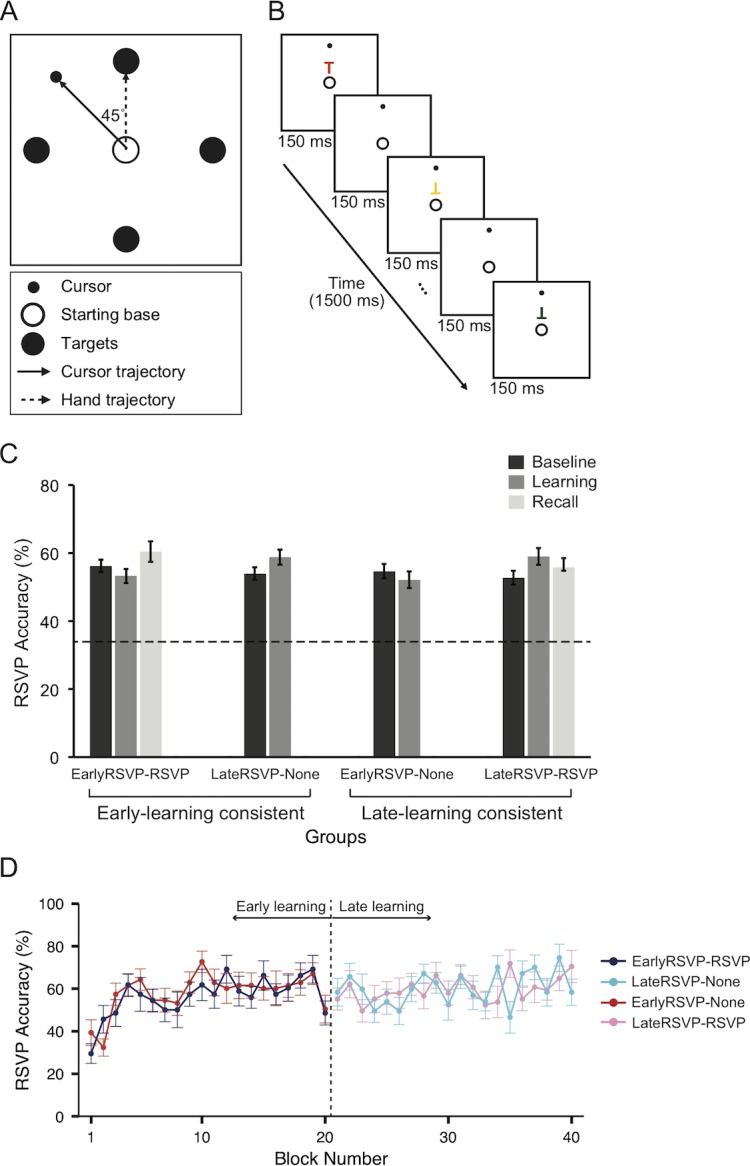Figure 1.

Task schematics and performance in the secondary RSVP task. (A) Reaching task. Targets appeared one at a time and remained visible for the whole trial. During the baseline and washout phases, the cursor followed the mouse normally. However, during the learning and recall phases, the cursor direction was rotated by 45° CCW from the hand trajectory. (B) The secondary RSVP task. A sequence of five Ts were presented for 150 ms, each either upright or inverted in five different colors. Participants had to report how many target Ts (red upright Ts and green inverted Ts) they detected by pressing a keyboard at the end of each trial with their left hand. (C) Average accuracy for the RSVP tasks of each group (EarlyRSVP–RSVP, LateRSVP–None, EarlyRSVP–None, and LateRSVP–RSVP) during baseline, learning, and recall phases. The dotted line indicates the 33% chance level. (D) Average RSVP accuracy of each of the four groups (EarlyRSVP–RSVP, LateRSVP–None, EarlyRSVP–None, and LateRSVP–RSVP) over the blocks (collapsed from four successive trials) during the learning phase. The error bars indicate the standard error of the means (SEM).
